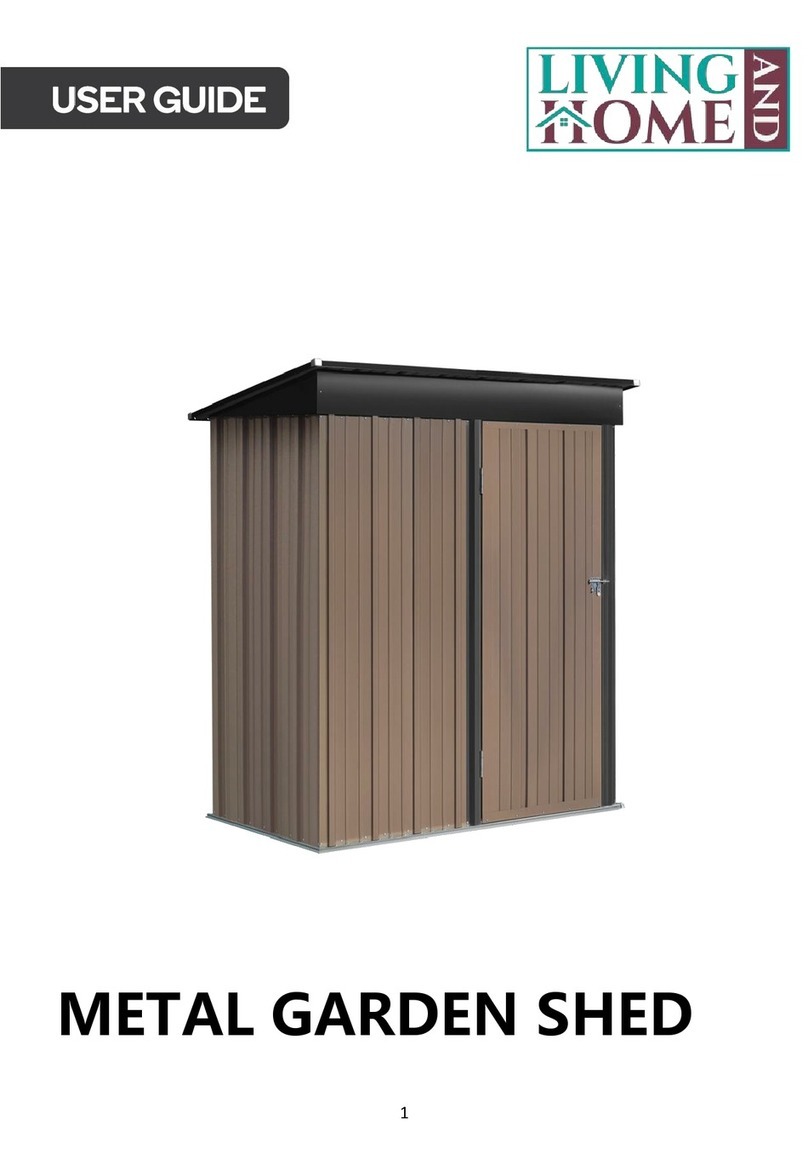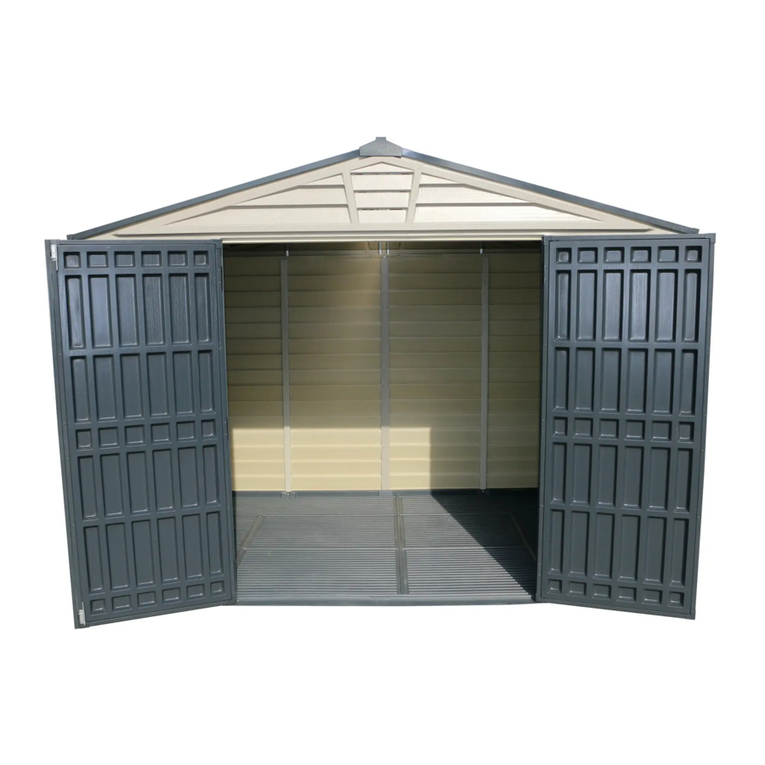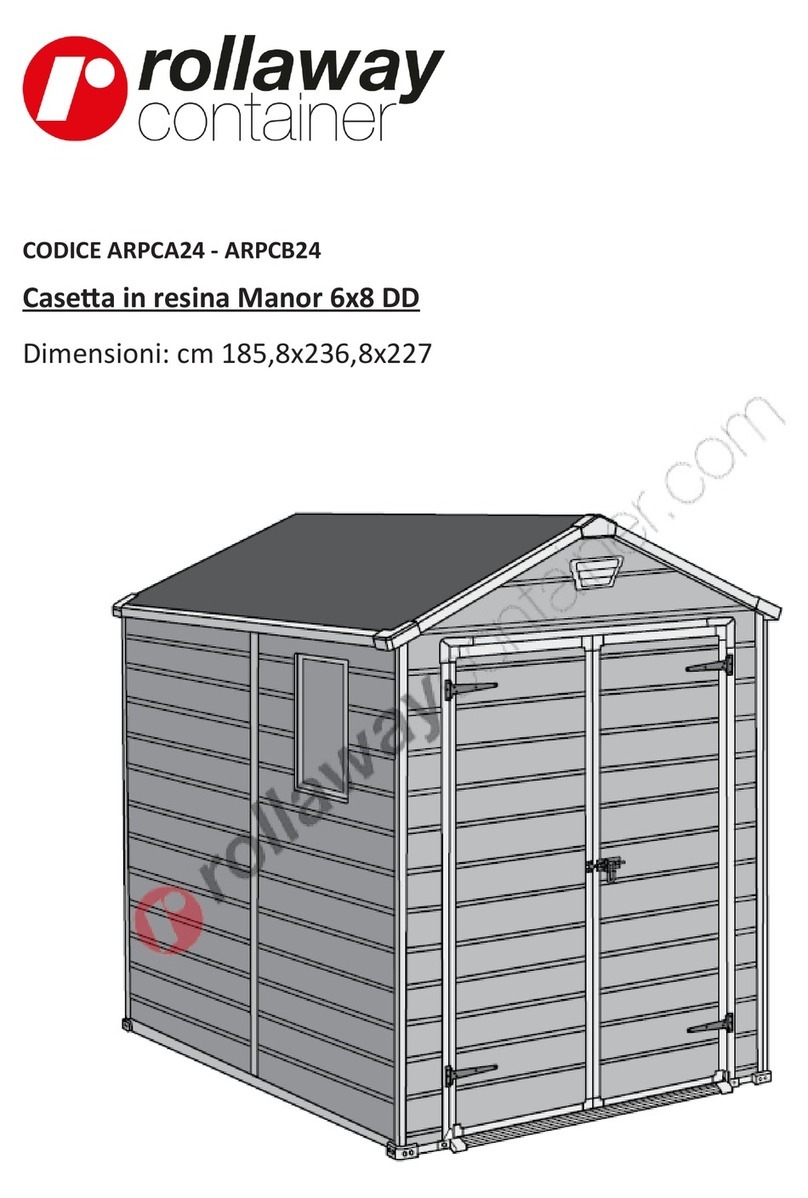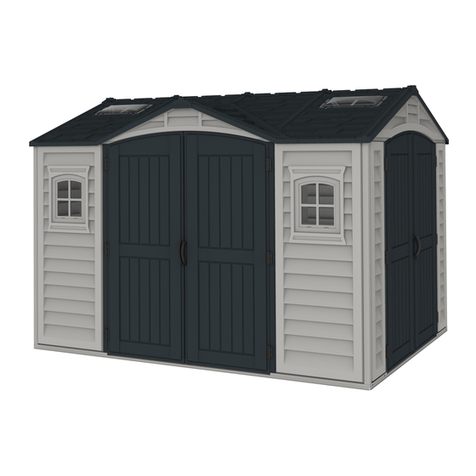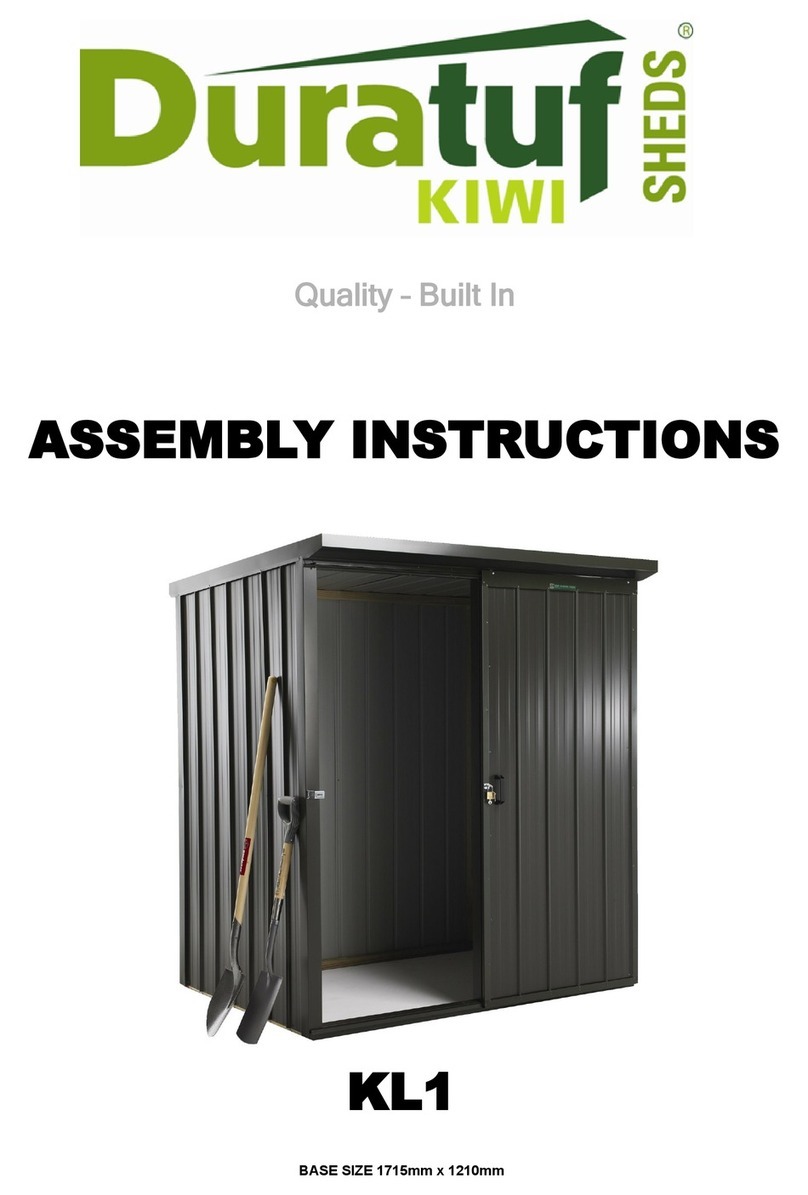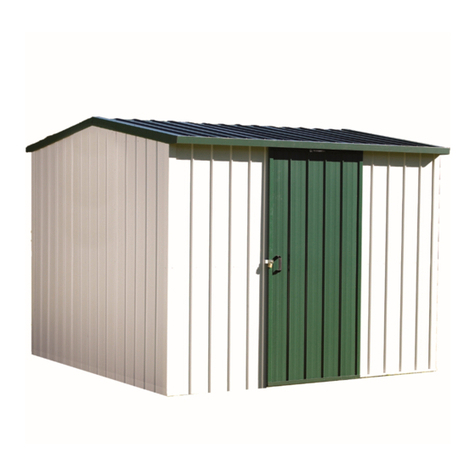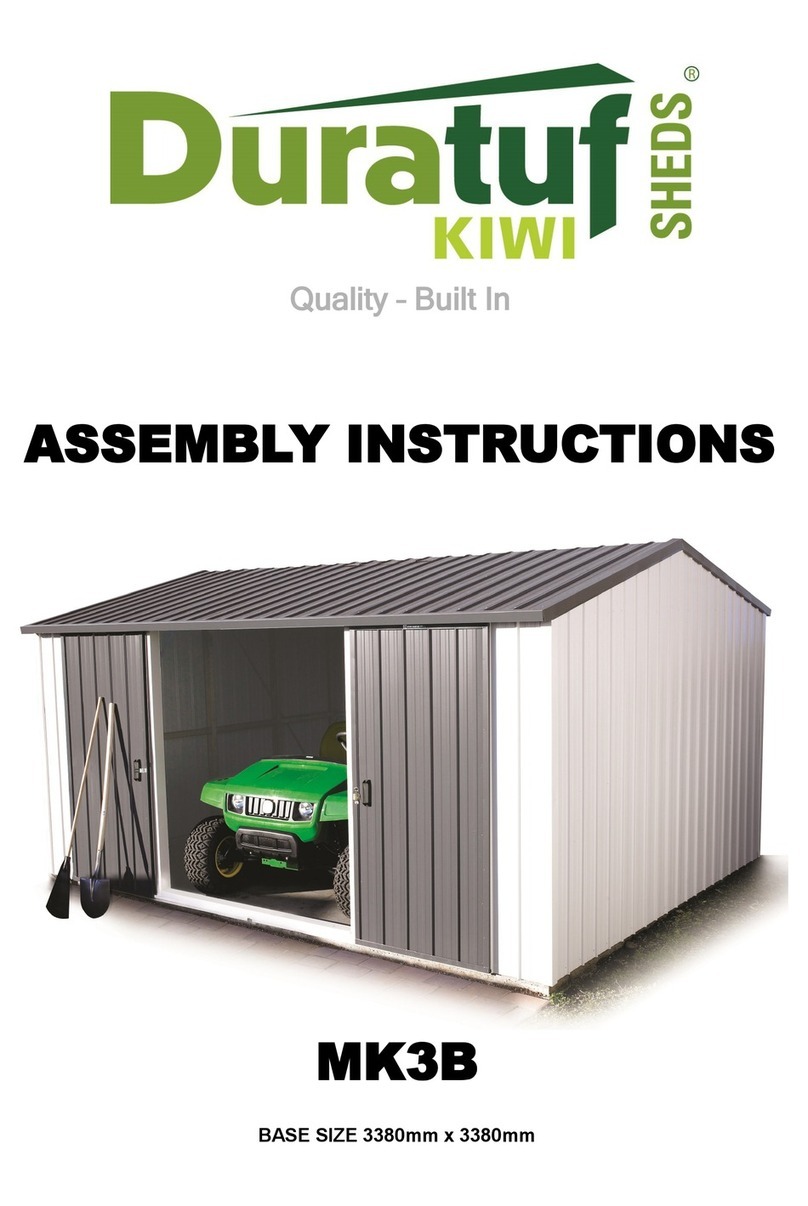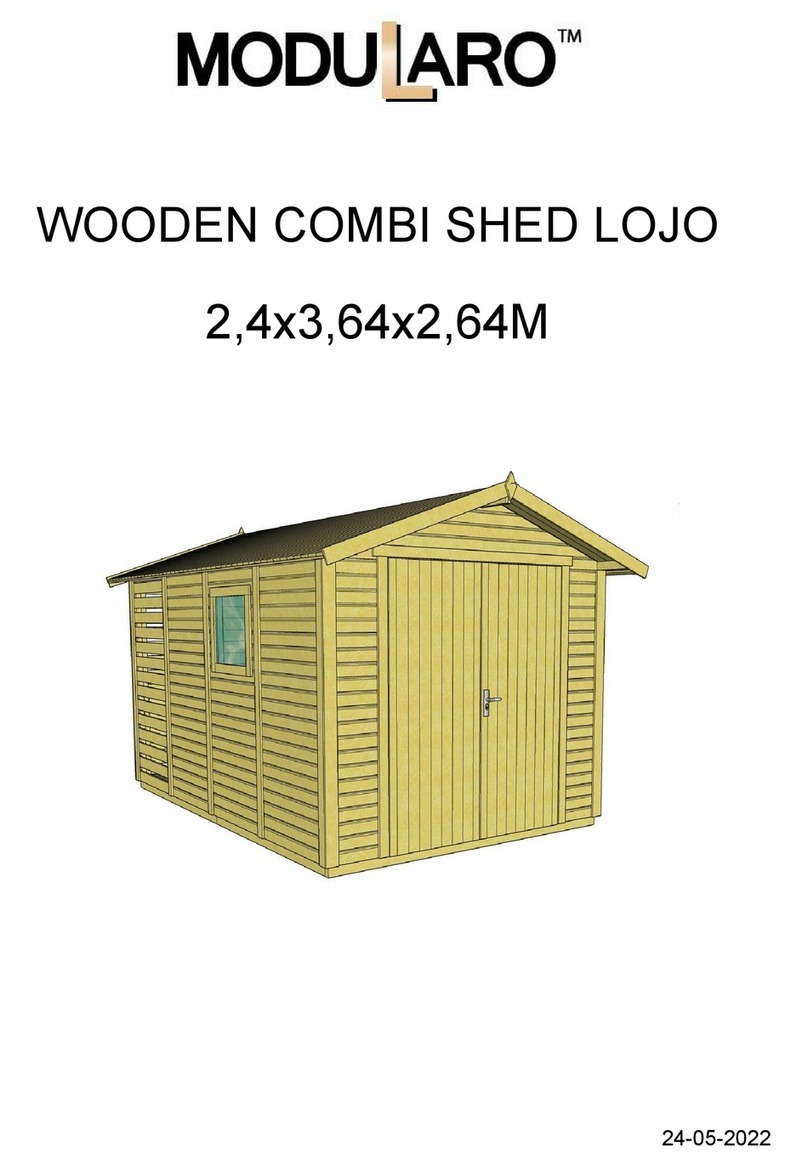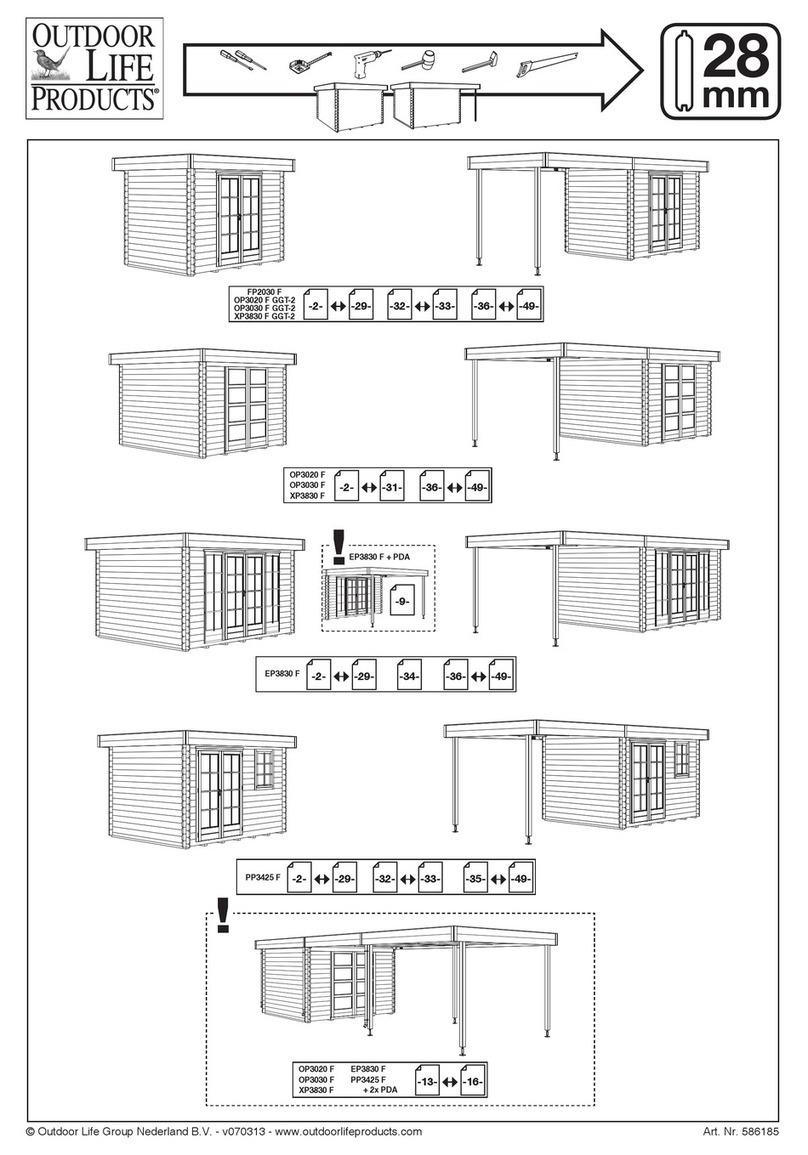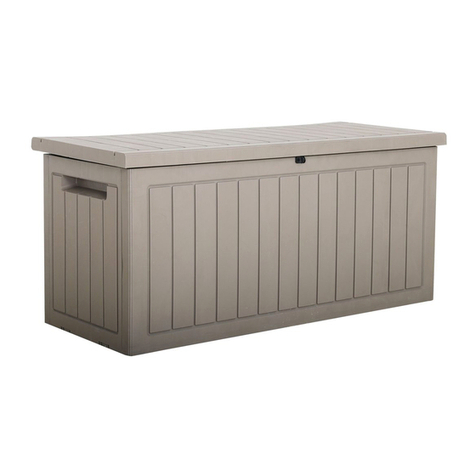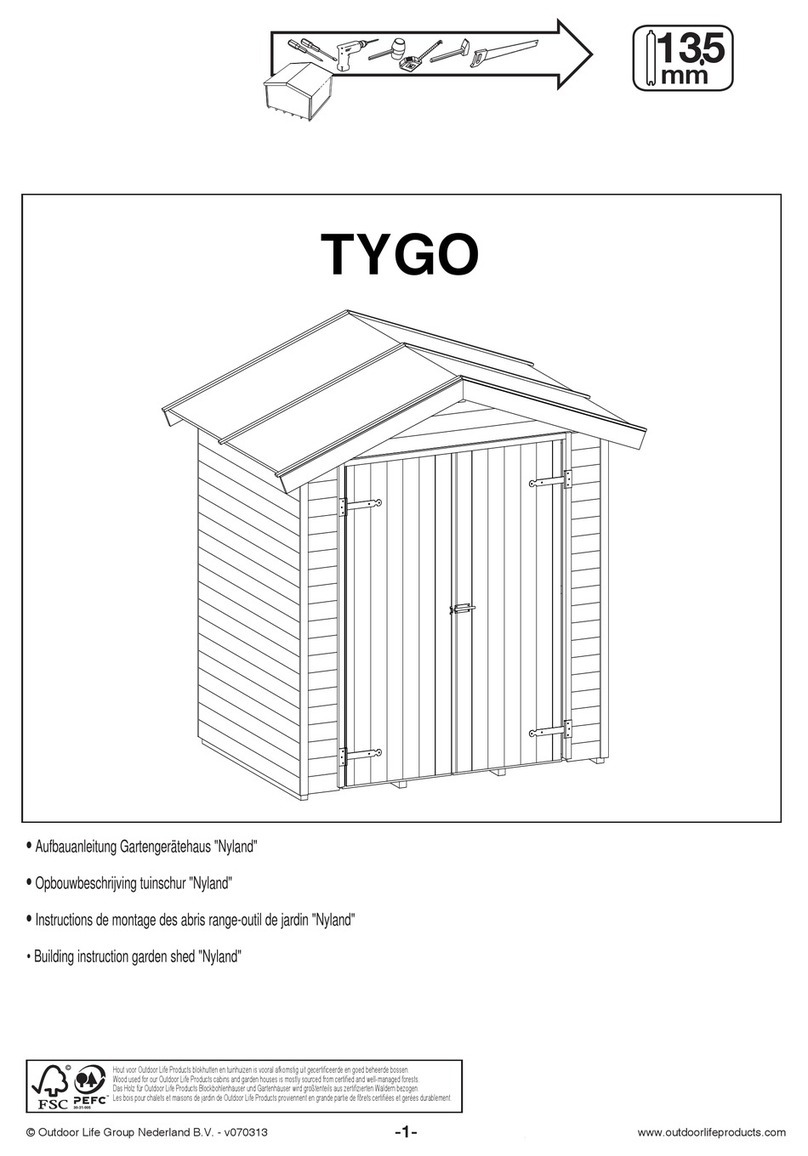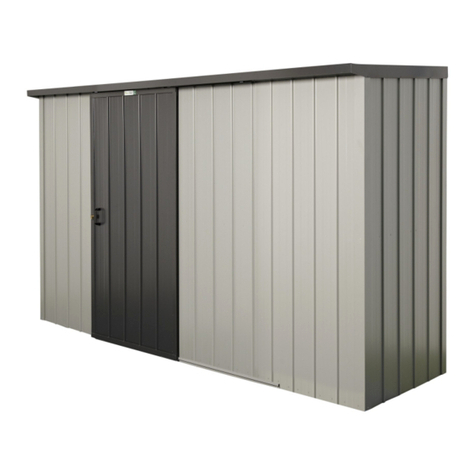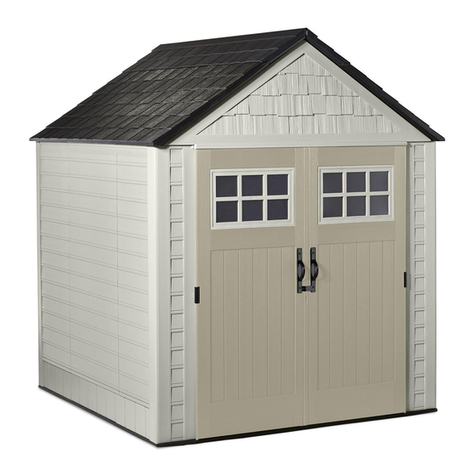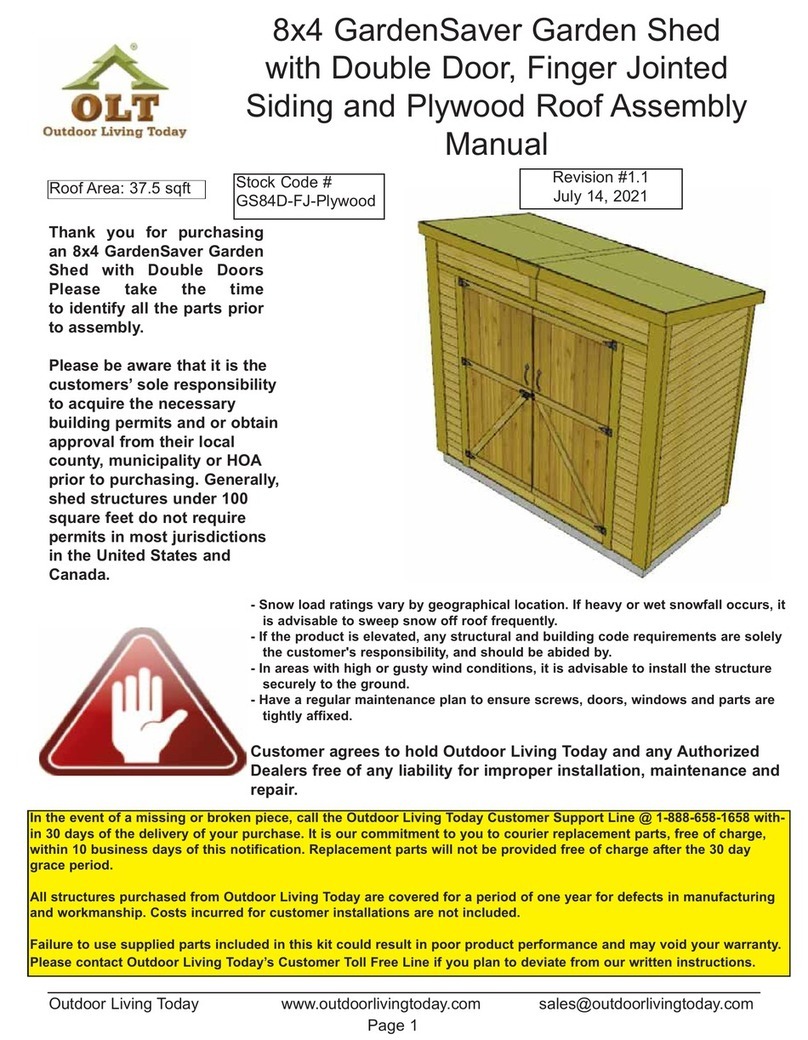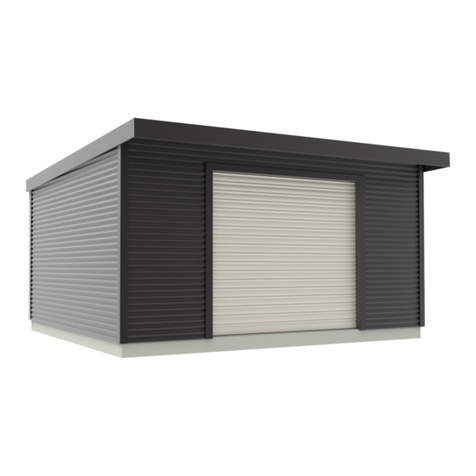
MK2A DOOR JAMB & CORNER FLASHINGS
10
Step 3: Fit Corner Flashing (101) over
corner Ribs with the top flush
with the top of the Top Plate.
Rivet in place with six rivets,
three each side. Repeat with
other three Corner Flashings.
When fitting Corner Flashings
on front wall, ensure they are
parallel with Door Jambs.
MK2A ROOF
Note: Condensation can form on the under side of shed roof. If building paper is required, fit now. Building paper will
need to be supported by netting or roofing twine.
Step 1: Check that the diagonal measurements of the shed are the same. If building on unlevel ground it may be neces-
sary to temporarily brace the shed with pieces of timber from the packaging.
Step 3: Starting from the left hand end, centralise
Roof on Ridge Beam. Ensure Roof is tight
against end Wall Sheets and nail one 40mm
Weatherseal through Lip into the Ridge
Beam. At the back, line up Ribs on the Roof
Sheet with the Ribs on Wall Sheet. Using
one 40mm Weatherseal, nail through Lip into
Top Plate. Repeat at the front.
Step 2: Position first Roof Sheet centrally over Ridge
Beam on the right hand end of shed with the
LIP on the left hand side. (For sheds with a
Clear Roof Panel, go to the next page). Posi-
tion the next Roof Sheet. Ensure it overlaps
correctly then rivet sheets together, 100mm
and 600mm down from the centre on both
sides. Fit remaining Roof Sheet.
Step 4: Centralize Roof at the other end and nail
through Pan into Ridge Beam and Top
Plates. Ensure Ridge Beam is straight, then
nail one 40mm Weatherseal into Ridge Beam
beside each overlap (one nail per sheet). At
the back, set up a String Line in centre of
Top Plate. Ensure Top Plate is straight and
nail off, using one 40mm Weatherseal per
Pan. Repeat at the front.
LIP
